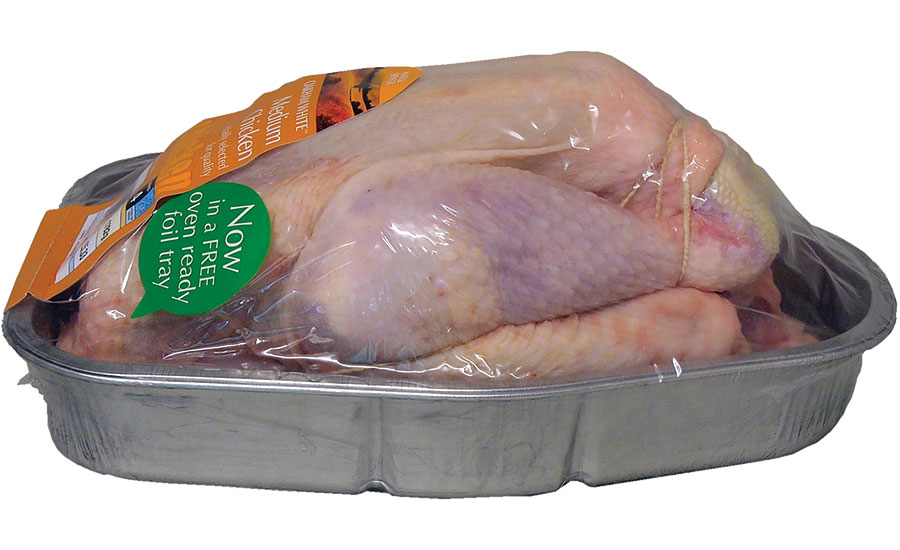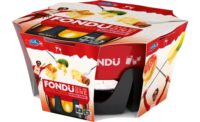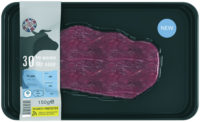Consumers are looking for convenience in poultry products due to smaller households and busy schedules. There is high demand for microwave-safe, flexible packaging options and designs with resealable closures, such as zippers, and small portions. As well, poultry packaging manufacturers are introducing innovative products that now include intelligent technologies.
The poultry packaging market in North America is expected to grow at a CAGR of close to 6 percent through 2022, according to Technavio (technavio.com).
One senior analyst for packaging research at Technavio states, “Poultry packaging films used for packaging whole chickens are now made by utilizing higher abuse-resistant polymers, which prevent tearing and leakage during transportation.”
In the region comprising the U.S., Canada and Mexico, the U.S. accounted for nearly 71 percent of the market share in 2017. The increased consumption of poultry products in the region is expected to boost the growth of the market during the forecast period. Advances in vacuum packaging and modified atmosphere packaging (MAP) will also lead to growth as these technologies help to extend the shelf life of poultry products.
Designs That Hit Home
Poultry brand Perdue received assistance from Enlisted Design (enlisteddesign.com) to help its packaging stand out from the flock. The goal was to better reflect the brand’s leading-edge animal care efforts and all-natural products while maintaining current consumer trust and appealing to younger generations.
“From whimsical illustrations to vibrant color and bold-meets-minimalist typography, an entirely new visual language celebrates the brand’s best practices (chickens raised in America on family farms, all-natural, no animal by-products, and no antibiotics ever). The new design radiates a fresh vibe — repositioning Perdue as more modern, approachable and natural,” says Beau Oyler, principal and creative director, Enlisted Design.
A farm scene with hand-drawn details and wood-grain textures bring the pasture to life. The bold typography and clear benefits help to identify Perdue products on shelf. The brand’s updated vibrant blue makes the brand feel more approachable and modern.
Foster Farms has seen a rise in consumer demand for both convenience and information about where their food comes from. The company’s on-package QR code — named DORI — is a scannable technology that provides shoppers with instant access to exclusive coupons, recipes, a guide to poultry labeling terms and more. The new packaging came out last fall.
Additionally, the poultry brand recently debuted Bold Bites, an on-the-go chicken snack that answers consumers’ call for convenience. The fully cooked, ready-to-eat chicken breast pieces have 15 grams of protein per serving. Packaged in single-serve pouches, the new product line includes five varieties: Cajun, Chile Verde, Korean BBQ, Caribbean Jerk and Parmesan Garlic. The 2.5 oz. single-serve pouch provides portability and convenience to meet the increased demand for lean protein on the go.
|
The Shift to Modern Day Demands Miguel Campos, export sales manager at food packaging manufacturer Advanta (advantapack.com), plans to use innovative packaging to fulfill the convenience and shelf-life demands of today’s poultry industry. Convenience is a key driver in changing what is on supermarket shelves. This is reflected by the increase of pre-marinated, ready-to-cook chicken products, which consumers can put straight into the oven without mess or fuss. This reliance on convenient food products is a trend that’s rising across North America, Europe and Australasia.

Consumption of chicken is continuing to grow; however, the industry is experiencing a shift in the types of products consumers are demanding. Today’s consumers are replacing traditional products with newer concepts — think: marinated wings, pre-marinated chicken breasts or turkey drummettes and ready-to-cook whole poultry. Packaging MattersThere’s no denying the growing demand for packaged food, but what does it mean for the poultry distributors, wholesalers and meal developers? Put simply, poultry packaging requires a rethink. Regardless of the quality or desirability of a product, packaging can have a significant impact on whether the shopper will make the purchase. This is particularly relevant for whole poultry. Generally speaking, today’s consumers don’t want to touch the chicken before it is cooked — which they have had to do with traditional plastic bag packaging. By manufacturing pre-marinated poultry products in an oven-proof tray, consumers experience minimal fuss as they move their meal from refrigerator to oven to table. Cook-In EngineeringFor consumers, aluminum trays that allow poultry to be cooked directly in their packaging means that cooking is fuss-free, but this method also has advantages for logistics. Robust foil trays allow sleeves and cartons to be lightweighted, reducing the total pack and transport costs of poultry. Aluminum trays are also suitable for use with hermetic seal machines and gas flushing (modified atmosphere packaging) techniques, allowing for shelf-life extension of poultry products if required. Typically, this is used with plastic trays or smoothwall foil trays. Consumers see versatility from a different angle. Poultry products that can be frozen, cooked on a direct flame and put on the table — all in the same container — are ideal. Market AnalysisThe future of poultry packaging will marry consumer convenience with shelf-life extension. One example is Advanta’s new poultry vacuum pack smoothwall tray. The consumer simply peels off the plastic skin surrounding the poultry, revealing the whole chicken in a foil tray, and places it in the oven. This combination brings the extended life from the skin pack plastic and the convenience of the foil tray ready to be put in the oven and onto the table. Consumer demand for convenience and retailers’ requirements for longer shelf-life is refocusing the priorities in poultry packaging. As consumption of poultry products continues to grow, packaging manufacturers must ensure their packaging is fit for purpose. Global consumer preferences will continue to drive changes in packaging across all poultry divisions. Packaging may take on new forms over the next decade, as long as consumer demands are embraced. |





